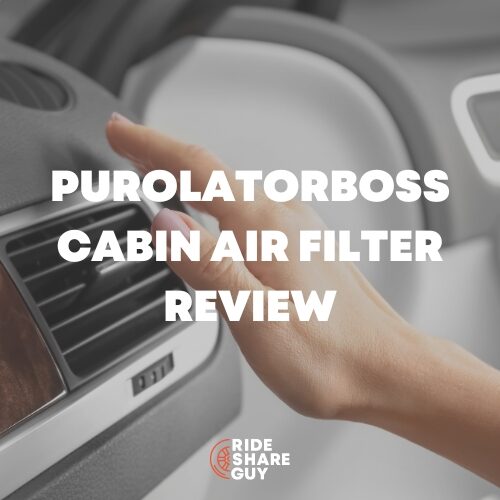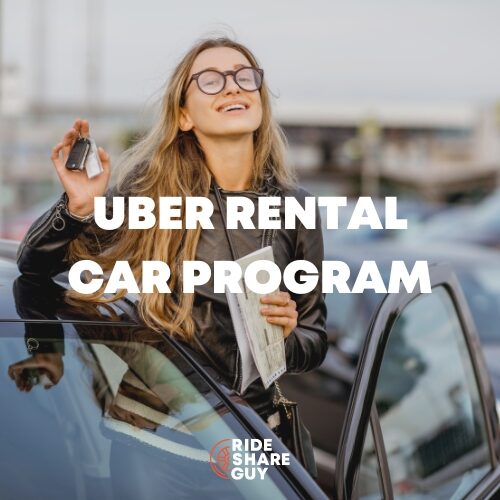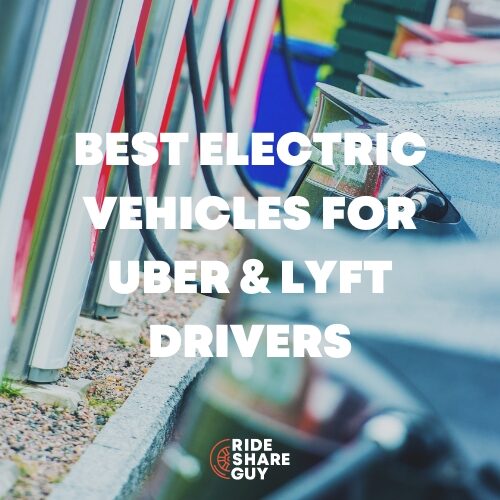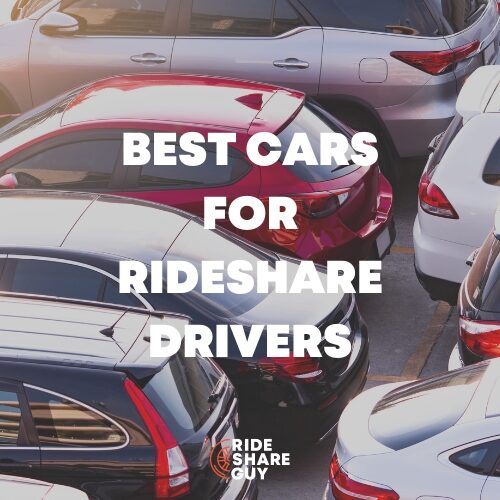I’m seeing a lot of Teslas sporting Uber and Lyft stickers these days, with gas priced out of control, as is the price of EVs. Even if you can afford it, it’s a months-long wait to buy a Tesla, and the lowest-priced one, the Model 3, is priced at just a hair under $50,000. Is there an affordable used alternative?
Well, the older Teslas are out there, and some of them can be picked up at a more affordable price, and what’s more, you can get one now. But should you?
If you’re interested, consider the Tesla Model S, plush, swanky, and with used prices as low as $30,000, less than many new hybrids.
What is a Tesla Model S?
The 2012-2016 Model was the first long-range mass-produced car, the car that changed the perception of EVs as crappy little “weirdmobiles” to something a serious baller would drive: sexy, exciting, exotic.
At a starting price of $69,000 (less the $7,500 federal tax credit), it wasn’t a mass-market car, but it was cheap enough to get into the hands of tens of thousands of drivers and light a fire under the ass of a global automotive industry that hated EVs.
“Beautiful, well-crafted, cool, and seriously fast,” gushed the car jocks at Road and Track, “the Model S isn’t just the most important car of the year. It’s the most important car America has made in an entire lifetime.” Settle down, boys! It’s still a car, so…
Driving a Tesla Model S for Uber
My initial impression of driving the well-cared-for 2015 Model S 85D I rented was, “Ahh.” It’s the automotive equivalent of slipping into a warm bubble bath.
The controls are intuitive and give nice feedback. You know, like a car. Steering is smooth, and responsive, and pairs nicely with the well-damped and controlled suspension. High-speed turns, speedbumps, potholes…the Model S takes it in stride.
It’s plush. It’s a luxury car. It’s a sports car. It’s a family car. It’s familiar and novel at the same time. It’s hard to categorize but it’s really nice to drive. “Wow! I thought Teslas were supposed to be harsh!” said more than one passenger.
But that power, tho. This car is nothing but giggles, melting the tires into the blacktop with 400-odd horsepower from all four wheels. Forty to 60? Eighty to 110? Whatever—the power just flows.
It’s nice to feel something that seemingly doesn’t have limits, and it’s fun to blast through the speed limit with abandon in these days of $6 a gallon gas, at least until Uber deactivates you. The noise at speed isn’t Mercedes or Bentley levels of quiet, but it’s better than my Model 3 or the Chevy Bolt I had before that.
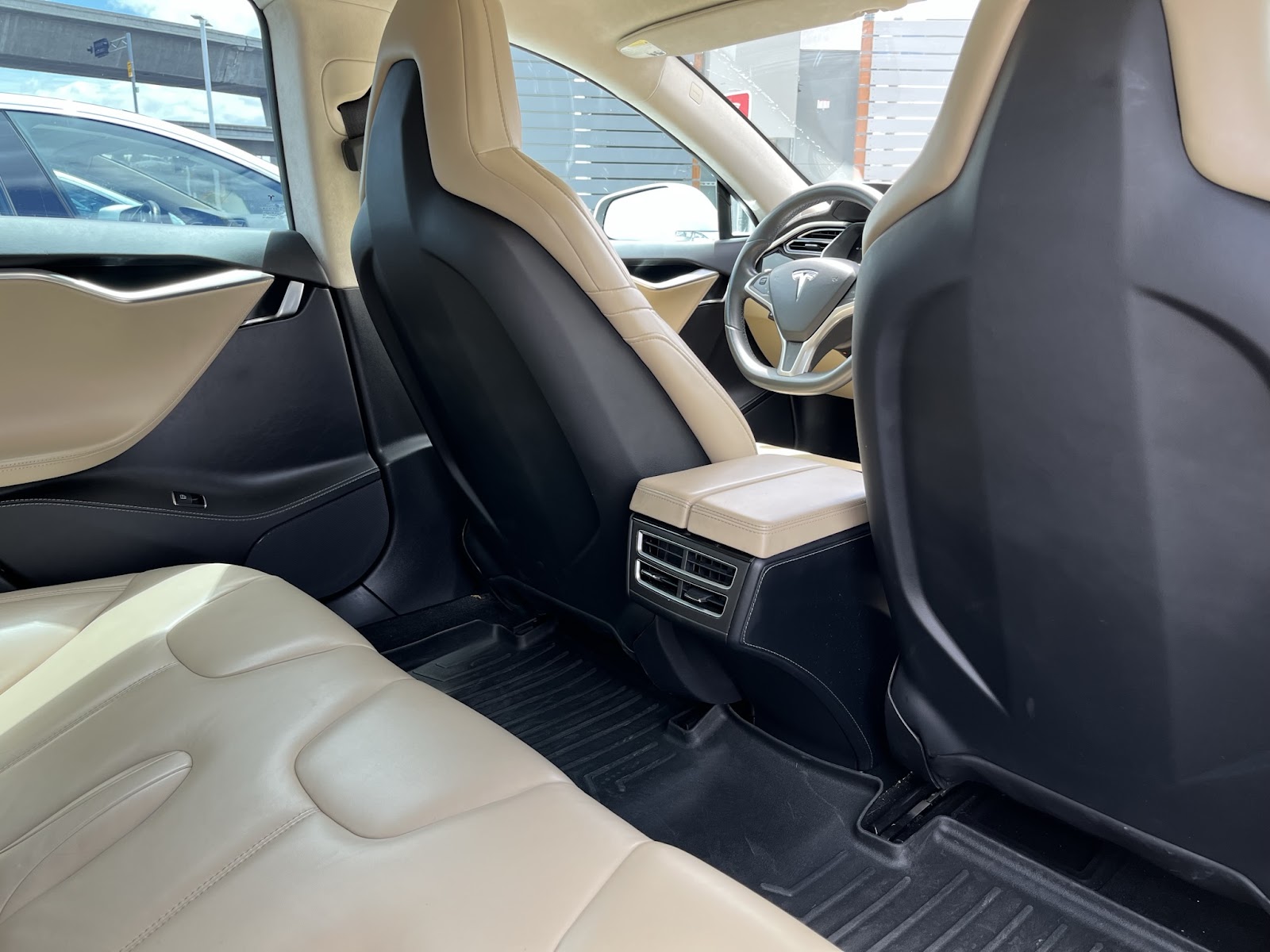
It’s plush, too, despite the interior’s sparse Larry Ellison zen-warrior aesthetic. The driver’s seat is comfortable for long drives and it’s easy to find the perfect position, and there’s an actual physical lever to adjust the reach, angle, and height of the steering wheel, and knobs and switches for the mirror adjusters, too.
Controls are mostly through the touchscreen, but they were easier to find than the Model 3’s.
Interior quality is…well, it’s mixed, like all Teslas. Some parts are pure finger candy, like the Alcantara dash and headliner and soft leather upholstery, but some were rattly and cheap plastic.
But that doesn’t matter. Many of my passengers told me we were driving in their dream car, and I think the interior and ride quality measure up to other luxury exotica.
Range & Charging of the Tesla Model S
When the 85D I rented for my test was brand new, the EPA told us it had a range of 270 miles, which is weird because the less-powerful, lighter rear-wheel drive was less efficient (2.6 miles/kWh) than the all-wheel drive 85D (2.94 miles/kWh).
I looked it up and it’s a thing called “torque sleep,” meaning the motors get switched off and charge the battery; two motors mean more efficiency. Or something.
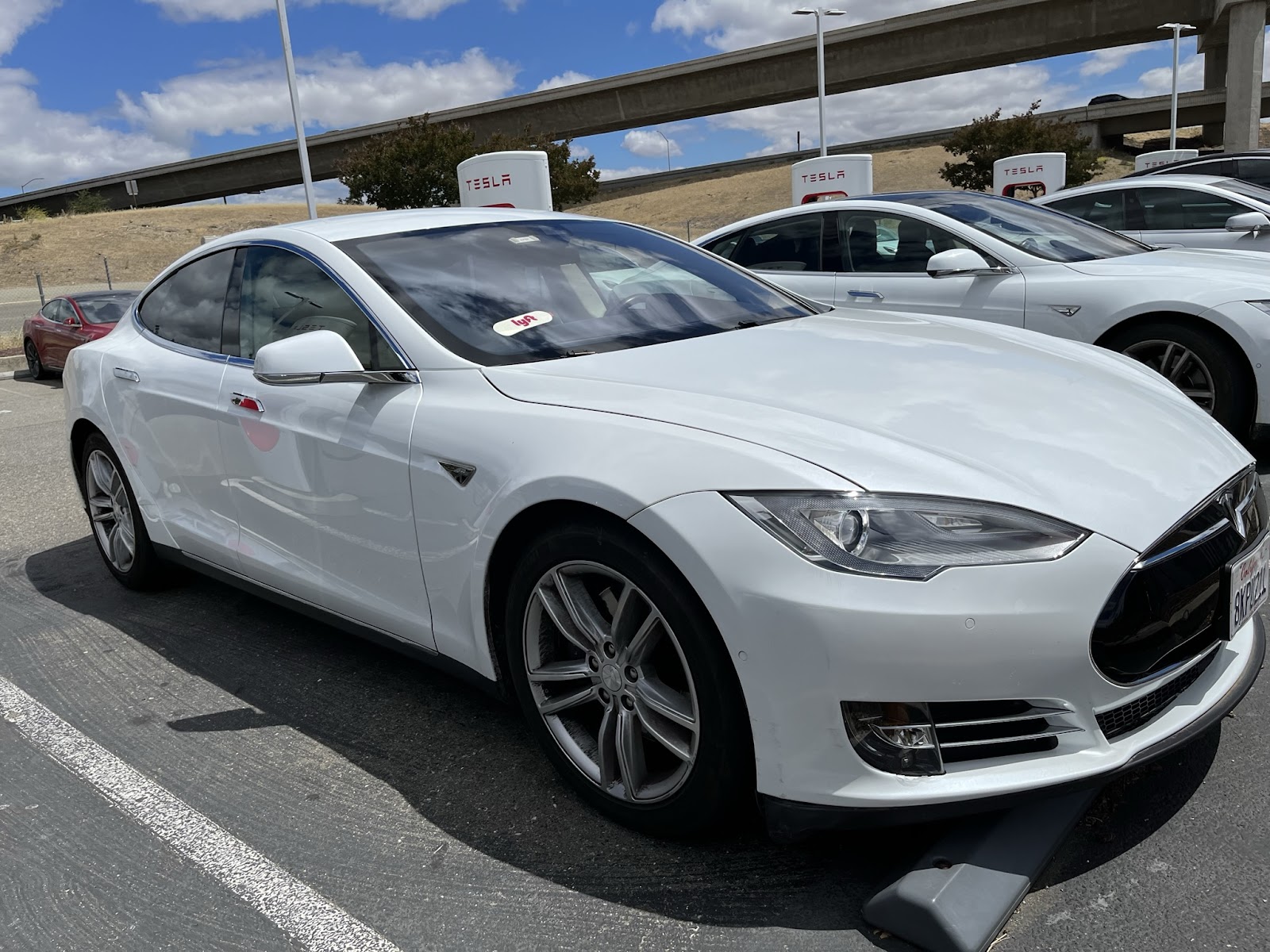
The car I drove had a real-world range of about 250 miles. Functionally, that’s probably 225, since Tesla recommends limiting your daily charge to less than 90 percent, saving full charges for those occasional road trips.
I don’t know about you, but it takes me a good six hours of Ubering to go that far, and if you need more range, most markets where ridesharing is lucrative have plenty of Superchargers – just look at the car’s map.
Do you get nervous about the range of electric vehicles? Here’s why range anxiety shouldn’t prevent you from buying an electric vehicle.
When you do, you will feel smug because Supercharger usage is free for the life of the car for all Model S and X built before 2020.
However, read the fine print of your car’s warranty and sales agreement. For one, it prohibits commercial use, though how Tesla would find out isn’t clear. And secondly, in some cases, the free Supercharging can’t be transferred to a new owner unless it’s sold pre-owned by Tesla.
A workaround is for the old owner not to delete the car from their account. Not convenient, but you’ve been warned.
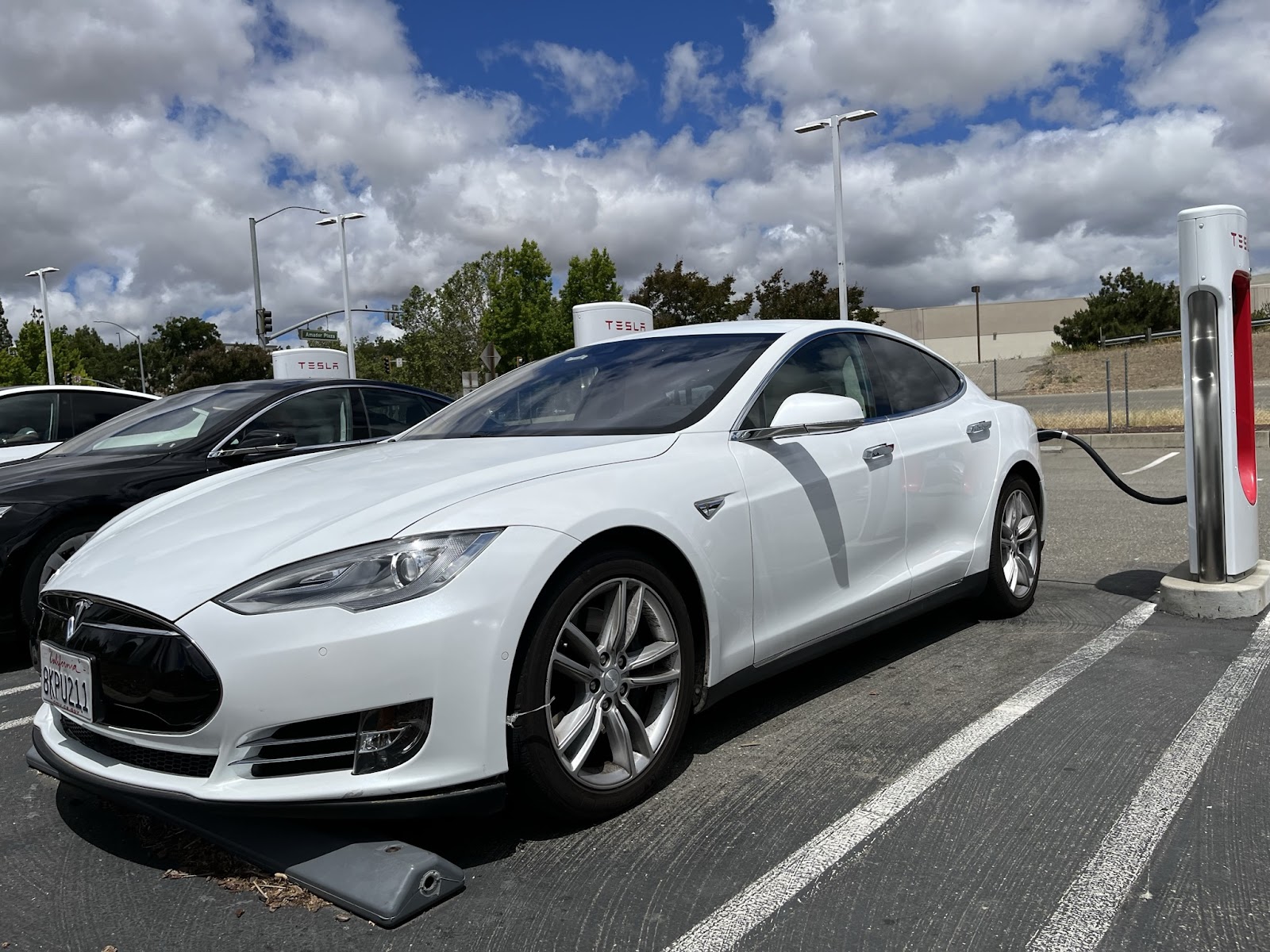
Whether or not you pay for it, Supercharging is pretty sweet with a Tesla. No messing around with credit cards and badly designed apps. Just plug in that cute little nubbin of a charging handle and walk away for 30 minutes.
That’s how much time it’ll take to add about 150 miles of range; the older Model S charges faster than other cars of the era (twice as fast as my 2018 Bolt, for instance), but slower than the latest generation of Teslas; about 100 kWh at its peak, but that slows considerably as the battery fills.
Your credit card gets charged depending on location and time of day, anywhere from 20 to 50 cents per kilowatt hour (kWh), which means adding 100 miles of range can be anywhere from $6 to $16; charging at home on a 240 outlet during off-peak hours is much, much cheaper.
Tesla Model S Tech
A decade after the Model S launched and showed us you could put an iPad into a car, the sleek, eye-catching interface—bigger than the 18-inch Sony Trinitron my sister had in the early 1980s—is still impressive. And it works great, too.
It will wow your passengers, has many features and games the latest cars have thanks to the constant over-the-air updates, and responds better than the latest devices in other brands. And it should, as most of the older cars have had these units replaced, either under warranty, recall, or a grumbling Tesla owner forking over $1,500.
It does everything it should, though the lack of Android Auto and Apple CarPlay makes life a little tougher for a rideshare driver. But there’s ample real estate for your phone holder and USB ports galore.
The Bluetooth is simple to pair and is about as robust as you’d expect from aged equipment. The map and navigation worked as well as my new Model 3’s; this car will stay up-to-date for years, if not forever.
Compare that to other 10-year-old luxury cars with embarrassingly outdated and complex tech (like the scroll wheels and touchpads used by Lexus, BMW and Mercedes), and it’s not a contest.
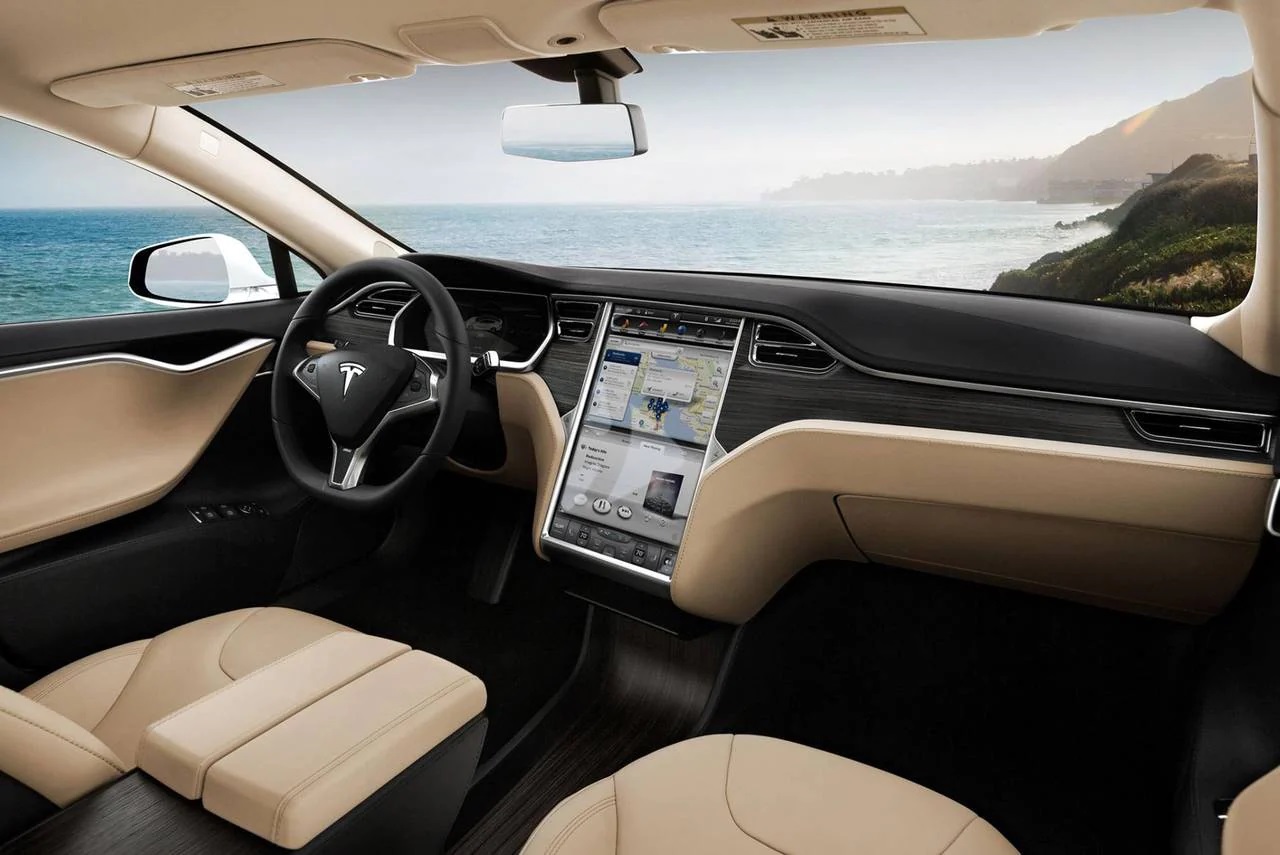
What Makes a Tesla Model S Good for Rideshare
A Tesla Model S is a great rideshare vehicle because it’s cheap to operate. It’s big enough to feel like a real luxury car, with room for five Americans, but nimble and light enough to be easy to drive around town or be fun on the open road.
It’s easy to get in and out of, with easy-to-use door handles and it’s eligible for most of the premium services, including Uber Black and Lyft Lux and Lyft Lux Black, and though the pre-2015s don’t qualify for Uber Comfort, they ironically do qualify for Comfort Electric.
And luggage space? Plenty—What Car magazine reported getting 11 roller bags into both front and rear trunks, with the rear seats still up.
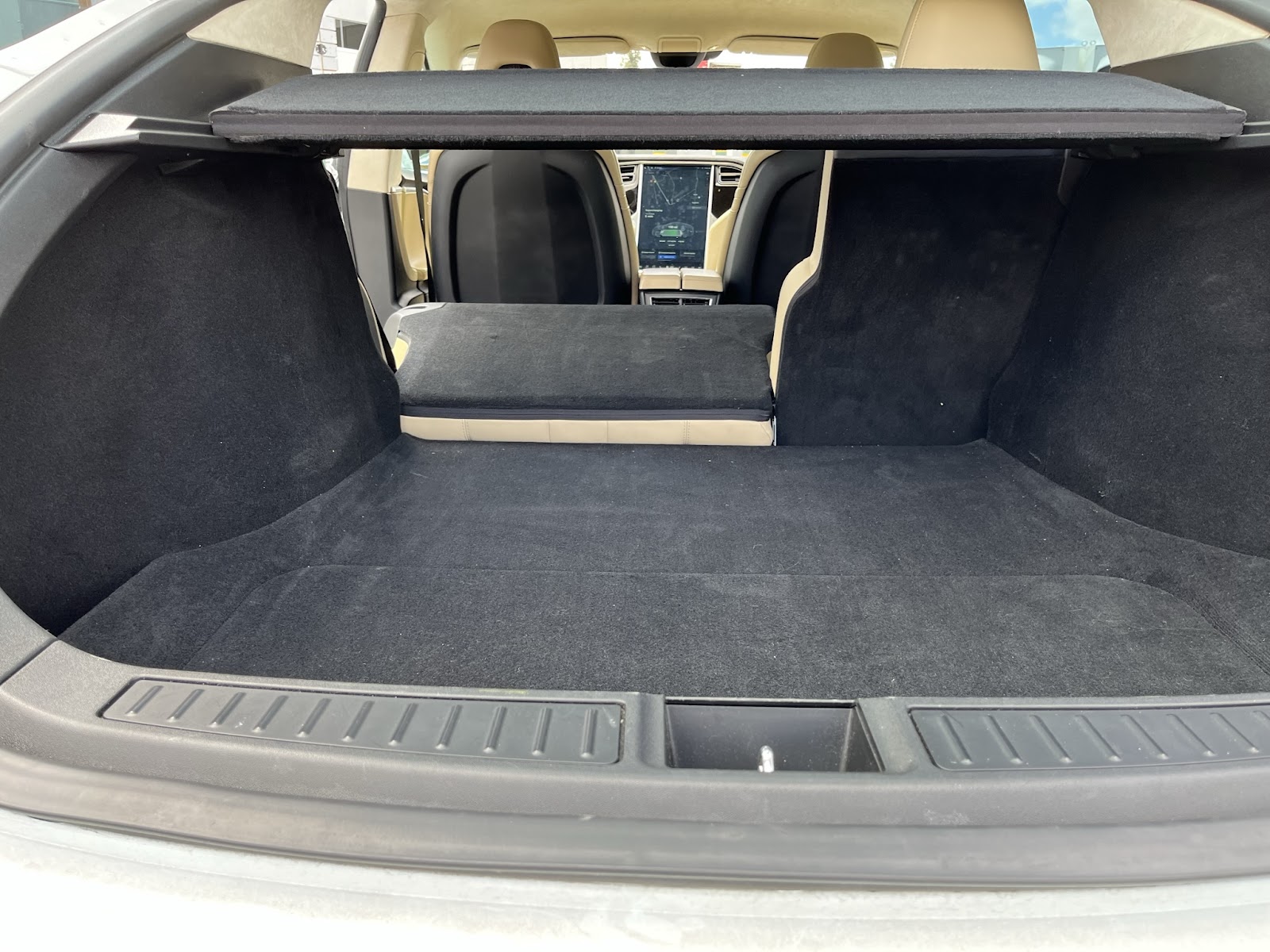
But most importantly, it’s cheap to operate for a heavyweight luxury car. The gas savings over a comparable 400-horsepower luxury car like a Mercedes S-Class over 200,000 miles is about $50,000 (and substantially more if you can figure out how to score free Supercharging without getting caught by Tesla), and if you think paying $450 to replace a door handle on a Tesla Model S is bad, just wait till you see what it costs to do major repair work on a luxury European car.
You will cry enough tears for your mechanic to float his new pontoon boat.
Cons of Driving a Tesla Model S for Rideshare
What makes it not a great choice is a simple answer, too: it’s not cheap to keep running.
Sure, your energy costs will be low (or maybe even nothing), but these cars are tough on tires, and though the maintenance schedule is mostly safety checks, high-mileage cars of any brand break things every so often.
There’s also the looming problem of battery replacement; it’s not inevitable, but it could be likely as you near the 300,000-mile mark, especially with the original batteries. Sure, there are million-mile Model S limos and taxis running around, but they’ve all had new batteries at some point.
Should You Buy a Tesla Model S for Rideshare?
Like buying anything used, buying a first-gen Tesla Model S entails risk, maybe more risk than usual due to the bumpy reliability record of these first-gen cars and the famously high replacement costs of the lithium-ion battery cells. Jumping in is not for the faint of heart, but it’s not as risky as you might think.
Tesla doesn’t have to do it, but there are instances where repairs are made at no charge out of warranty. For instance, the door handle on the car I rented was replaced last year, even though the original bumper-to-bumper, 50,000-mile expired in 2018 or 2019.
Other Model S owners report their displays and other components getting switched out as well, usually when there’s a recall. But if you don’t receive the munificence of the Tesla Service Gods, you will pay. Oh yes, you will pay. “They’re money pits!” says one Facebook Model S enthusiast group participant. Repeatedly.
Besides door handles and the display, things that go wrong are control arms, bushings, and other suspension components (my tester had a clank-clatter-clank coming from the right front wheel), interior trim, trunk latches, and even the drive motors. And when stuff breaks you’re basically limited to taking it to the Tesla service center (this is changing, slowly), where pricing is non-competitive and non-negotiable. Not fun, unless you are a skilled mechanic who likes high-voltage mysteries.
Which Tesla Model S Should You Get?
There are a plethora of different “S” models, but the lettering system is simple.
“P” means hopped-up motors and suspension, the two-digit number is battery pack size in kWh, and if there’s a “D” on the end it has all-wheel drive.
There are many different battery configurations for the Model S but stick to the 70 or larger. Get one that still has some battery warranty, and check the vehicle history to see if the car has had recall and warranty work done—try to get one that’s already had a new battery installed! (Tesla service centers will evaluate a car for you) The latest batteries should, in theory, last a half million miles or more.
One bright spot is the battery and powertrain warranty on pre-2020 Model S and X cars with batteries 70 kWh or larger. It’s eight years, unlimited miles from the in-service date, which will be on the Carfax report (the smaller 40 and 60kWh batteries are warranted for eight years and 125,000 miles).
It’s not as great as it sounds, since Tesla can replace bad components with reconditioned ones, and doesn’t have to change all the cells, just the bad ones. Also, the replaced battery is only guaranteed until the end of the original warranty period and only has to have enough capacity to satisfy the warranty—generally 70 percent. Still, it could save you from a repair bill of up to $25,000 and blowing up your car in frustration.
If you’re just mildly cautious, buy one with enough time left on the battery warranty to recoup most of your investment in the car.
If you are incautious, buy a car that already had a battery replacement; most of the older cars still on the road have had battery repairs or replacements already. Researching this car makes me think Tesla’s official motto should be Caveat Emptor.
Takeaways for Drivers
If you want the maximum return on $30 or $40 grand, you should get a Prius.
But if you’re a used-car sort of person who loves getting a $100,000 luxury car (that is eligible for Uber Black) for a steep discount and wowing friends, family, and passengers with a really nice and impressive ride, a piece of real automotive history that you can drive every day (on free electricity!), and can be cool and dispassionate about selecting one, I’ll bet you could make an older Model S work for you; plenty of drivers have.
A final note: if all your research consists of reading this article and watching my very fine video (coming soon), somebody needs to hit you over the head with a large polo mallet.
Be very careful. What do you think? Would a car like a used Model S work for you? Tell us in the comments or join our Uber & Lyft EV Drivers group on Facebook.
